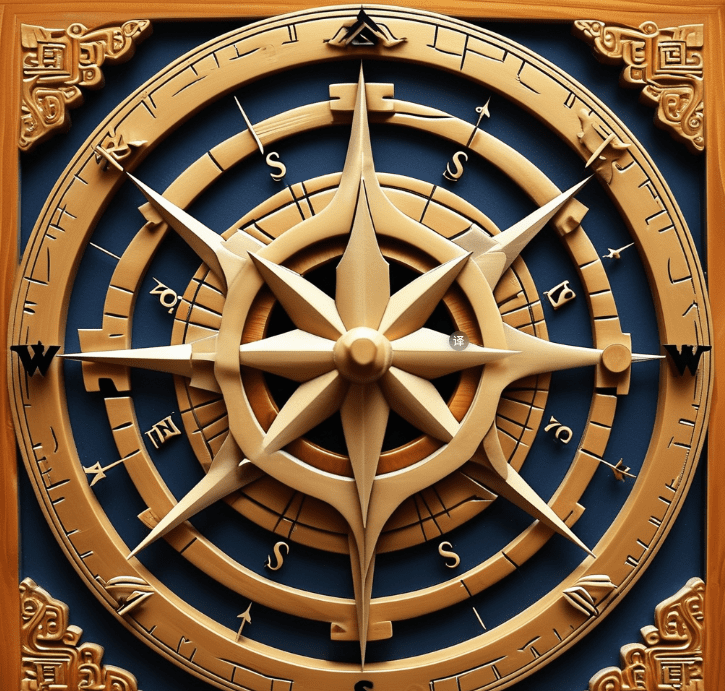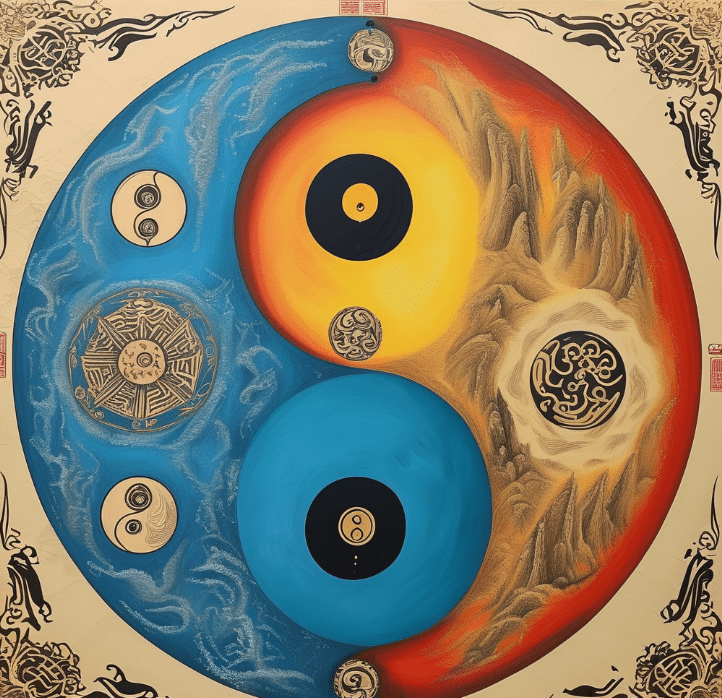Did the Compass Appear in the Song Dynasty?
It is said that the compass appeared in the Song Dynasty. The earliest existing physical model of a compass is a Song Dynasty color-painted standing figure compass pottery figurine, which is a second-class cultural relic. This Song Dynasty color-painted standing figure compass pottery figurine was unearthed in Linchuan District, Fuzhou City in May 1997. The figurine is 23.2 centimeters tall, has a base diameter of 7.6 centimeters, and weighs 423 grams. It is made of gray-white pottery, and the standing figure has tied hair. The figurine has bright eyes, looking straight ahead, with a ruddy face, and is wearing a yellow-brown right-sleeved long robe. The base is square, and most of the color has fallen off. The bottom of the figurine is inscribed with the words “Zhang Jian Gu”. The figurine holds a large compass with a pointer. The middle of the pointer is diamond-shaped, with a small hole in the middle, and the two sides are strip-shaped, pointing to the left and right. The entire pointer is located in the center of the compass, and the end of the pointer is connected to the compass. The compass is a wide flat ring shape, and there are obvious scale lines on the plate. Excluding the scale lines covered by the end of the pointer and the hands of the figurine, there are 15 scales in total, and the distance between the scales is roughly the same. It is a compass that can rotate on a scale plate to indicate direction.
Why Did Ancient People Use Compasses?
Ordinary people think that the function of the compass is a compass or a theodolite, which is mainly used to measure the orientation of buildings. In fact, when ancient people used the compass to examine houses, in addition to determining the orientation of the building, the more important function was to perceive the stability of the energy field around and inside the building, as well as the direction of “energy”, in order to determine the position of the building’s door and set up items for enhancing, transforming, and controlling “energy”. The orientation of the compass is determined according to the twenty-four mountains. Sitting on each mountain has different meanings for the house, and represents different fortunes. In addition to the twenty-four mountains, there is also the void position (the middle line of the two mountains), and the meaning of the void position is even more different. For the same residence, the degree of orientation will change every year when surveyed. In serious cases, it will change to another mountain, some will run to the void line, and some will run to another hexagram position. These changes represent the changes in the fortune of the owner of the house in that year. The compass itself is also a good energy-deflecting item. The compass has the Pre-heaven Bagua, Post-heaven Bagua, as well as the heavenly stems and earthly branches, yin and yang, wuxing, 64 hexagrams, etc. It contains a lot of information for interpreting nature. Hanging it in the energy-deflecting position can achieve a good effect of controlling energy-deflecting.
Is the Compass the Prototype of the Compass?
The compass is a directional instrument made using the north-south polarity of magnets in the earth’s magnetic field. In essence, it uses the magnetism in the magnetic field. Its prototype is the sinan and the pattern plate. The sinan is an improved version of the soil gui and is also a big step in the development of ancient astronomy. However, because it is not easy to find the accurate polarity during the processing of natural magnets, and it is also easy to lose magnetism due to vibration. In modern management terms, the production cost is extremely high and the scrap rate is very large. Usually, the magnetism of the magnet is weakened due to the loss in the manufacturing process. In addition, the friction resistance generated when rotating in contact with the wooden plate is relatively large, and the effect is not ideal. Later, through the accumulation of experience, people continuously improved various methods, and finally adopted the means of artificial magnetization, and then there was a higher-level magnetic compass—the compass. Every geomancer or feng shui consultant must have an indispensable tool—the Chinese compass. In fact, there is a small compass in the sky pool of the compass. China had invented and used compasses at least by the 11th century. During the Southern Song Dynasty, Chen Yuanjing wrote in the book “Shi Lin Guang Ji” about two other widely circulated compass devices at that time: the wooden carved compass fish and the compass turtle. The wooden carved compass fish is to put a piece of natural magnet into the belly of the wooden fish, and let the wooden fish float on the water to point south. The wooden carved compass turtle is to dig a small hole under the belly of the wooden turtle, put a magnet in the belly, and then install it on a bamboo nail, so that it can rotate freely and point to the south when stationary. The compass was continuously improved and perfected during use. At first, there was no base plate—the orientation plate. Later, people combined the two into one, and then a more scientific and valuable Luo Jing Pan (compass) appeared, which was another leap in the development history of the compass. The first to appear was the water compass, which floated a magnetic needle on a rush on the water surface, and below was a base plate with twenty-four orientations. This was during the Northern Song Dynasty. In the Ming Dynasty’s Jiajing years, the dry compass appeared, and its magnetic needle was supported by a nail. From these, it can be seen that the compass is the prototype of the compass.




